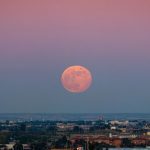 Politics
Politics  Politics
Politics  Weird Stuff
Weird Stuff Ten Bizarre Facts About The Doge Meme
 Our World
Our World 10 Ways Your Christmas Tree Is More Lit Than You Think
 Movies and TV
Movies and TV The 10 Coolest Stars to Set Sail on The Love Boat
 History
History 10 Things You Didn’t Know About the American National Anthem
 Technology
Technology Top 10 Everyday Tech Buzzwords That Hide a Darker Past
 Humans
Humans 10 Everyday Human Behaviors That Are Actually Survival Instincts
 Animals
Animals 10 Animals That Humiliated and Harmed Historical Leaders
 History
History 10 Most Influential Protests in Modern History
 Creepy
Creepy 10 More Representations of Death from Myth, Legend, and Folktale
 Politics
Politics 10 Political Scandals That Sent Crowds Into the Streets
 Weird Stuff
Weird Stuff Ten Bizarre Facts About The Doge Meme
 Our World
Our World 10 Ways Your Christmas Tree Is More Lit Than You Think
Who's Behind Listverse?

Jamie Frater
Head Editor
Jamie founded Listverse due to an insatiable desire to share fascinating, obscure, and bizarre facts. He has been a guest speaker on numerous national radio and television stations and is a five time published author.
More About Us Movies and TV
Movies and TV The 10 Coolest Stars to Set Sail on The Love Boat
 History
History 10 Things You Didn’t Know About the American National Anthem
 Technology
Technology Top 10 Everyday Tech Buzzwords That Hide a Darker Past
 Humans
Humans 10 Everyday Human Behaviors That Are Actually Survival Instincts
 Animals
Animals 10 Animals That Humiliated and Harmed Historical Leaders
 History
History 10 Most Influential Protests in Modern History
 Creepy
Creepy 10 More Representations of Death from Myth, Legend, and Folktale
Ten Astonishing New Insights into Alien Worlds
The universe is a fascinating place, brimming with planets still to be discovered. Even the ones we know about are constantly revealing surprising new facts. From a rogue sphere soaring through the skies to Mars’s potential hidden ocean of water, the cosmos still holds its secrets.
Day after day, scientists have to rethink old ideas about what other worlds might be like. As telescopes and spacecraft grow more sophisticated, we can now peer into the galactic depths like never before. Prepare for lift-off as we run through ten astounding new discoveries about worlds other than our own.
Related: Top 10 Bizarre And Deadly Exoplanets
10 James Webb Telescope Provides Spectacular View of Jupiter’s Auroras
The James Webb Space Telescope (JWST) is one of the most remarkable detectors in modern astronomy. On Christmas Day 2023, researchers used the telescope to view Jupiter’s auroras and were stunned by what they saw. JWST’s infrared cameras allowed them to watch the dynamic dazzle like never before.
Auroras are created when charged particles bombard a planet with intense speed and energy. They smash into the atmosphere and cause the gases to glow with spectacular shifting flashes of colors. Jupiter is under constant fire from charged particles expelled by the sun or spat out of volcanoes on its moon, Io.
Jonathan Nichols, a researcher at the University of Leicester in the UK, explained, “We wanted to see how quickly the auroras change, expecting them to fade in and out ponderously, perhaps over a quarter of an hour or so. Instead, we observed the whole auroral region fizzing and popping with light, sometimes varying by the second.”[1]
9 Scientists Discover Dying Planet Falling Apart in Orbit
In April 2025, astronomers unveiled a planet falling to pieces in orbit around a star. BD+05 4868 b can be found in the Pegasus constellation, 140 light years from Earth. The star’s blistering heat scorches the ill-fated world to nearly 3,000°F (1,600°C). Its surface fizzles, and large globs of molten rock splinter off. The planet leaves a nine-million-kilometer lava tail in its wake.
The disintegrating planet takes just 30.5 hours to zip around its star, but with each orbit, it loses approximately the mass of Mount Everest. Scientists say it may take one to two million years for BD+05 4868 b to fall apart entirely, which allows them a rare vision of an exoplanet crumbling in real time.
NASA’s Transiting Exoplanet Survey Satellite (TESS) observatory spotted the dying world. “We got lucky with catching it exactly when it’s really going away,” said TESS astronomer Avi Shporer. “It’s like on its last breath.”[2]
8 Rogue Planet Spotted Gliding Across the Cosmos
We are heading back to the JWST for this entry, where astronomers have been studying a rogue object that acts like an exoplanet with no star. The cosmic nomad is gliding through the skies in the constellation Capricornus, 20 light years from Earth. SIMP 0136+0933 is the brightest object without a star in the Northern Hemisphere.
The radical wanderer does not meet all the criteria for a planet in that it does not orbit a star. However, it is not big or heavy enough to fit into other categories like a brown dwarf. Its days last just 2.4 hours, and its atmosphere is thick with minerals. JWST researchers discovered that the rogue world is covered in clouds of iron and magnesium. Floating above those are radiation hotspots made of glowing swirls of radio waves, similar to the northern lights on Earth.
Astronomers hope to learn more about SIMP 0136+0933 using NASA’s Nancy Grace Roman Space Telescope, which should head into orbit in 2027.[3]
7 Spacecraft Takes Stunning Snaps of Mercury’s North Pole
In January 2025, a spacecraft took some of the most detailed photographs of Mercury’s north pole. The BepiColombo explorer flew 183 miles over the planet’s surface, covering the ‘terminator’ boundary where day meets night. The images give scientists a new view of the crags and craters that litter the tiny planet.
The spacecraft is a joint mission by space agencies in Europe and Japan. It captured images of some of Mercury’s most fascinating features. BepiColombo snapped pictures of volcanic plains and a massive impact crater. Scientists believe the craters may contain frozen water.[4]
6 Scientists Reveal Extreme Exoplanet That Rains Liquid Iron
WASP-121 b experiences weather like no planet astronomers have ever seen before. The unrelenting temperature is so high that liquid iron rains from the sky. Extreme winds batter the gas giant, blowing vaporized metal from one side to the other.
The sci-fi hellscape is around 900 light years from us. It sits so close to its star that it takes just 30 hours to orbit. One side of the planet constantly faces the sun and remains in blistering daytime. The other is shadowed in everlasting night. The eye-watering heat of the day side turns metals like iron and titanium into vapor. A ferocious jet stream then carries the elements to the night side, where they cool down and fall as rain.
“What we found was surprising: a jet stream rotates material around the planet’s equator, while a separate flow at lower levels of the atmosphere moves gas from the hot side to the cooler side,” said researcher Julia Victoria Seidel. “This kind of climate has never been seen before on any planet. Even the strongest hurricanes in the solar system seem calm in comparison.”[5]
5 Why Are the Volatile Storms on Uranus and Neptune So Short-Lived?
Astronomers have known for years about the turbulent storms that flare across the two outermost planets of the Solar System. NASA’s Voyager probes first detected them on Uranus and Neptune in the 1980s. But until recently, no one knew what drove the freakish weather. Now, a 2024 study has revealed that methane could explain the sudden nature of these violent storms.
Methane is typically found as a gas, but scientists reckon that it condenses in the ice giants’ frigid conditions and forms liquid droplets. In the highest regions of the atmosphere, methane cools and begins to sink, only to heat up and rise again. The air can grow thick with methane, and a dense layer forms. This can affect the heat dynamics in the atmosphere, which impacts whether storms form and their duration.[6]
4 Newborn World Shows Us How Planets Behave in Their Infancy
Image traveling 520 light-years from Earth, where the youngest exoplanet scientists have ever seen lies. At three million years old, it might not seem that young, but TIDYE-1 b is a baby in astronomical terms. If the Earth were 50 years old, this nascent world would have existed for just two weeks.
North Carolina student Madyson Barber discovered the fledgling planet by studying the light from a nearby star. She saw that its brightness dimmed just over once a week. The young world takes 8.8 days to orbit and blocks some of the starlight on its journey.
“With this discovery, she has now uncovered three new exoplanets,” Barber told reporters. “There’s so much we can learn by looking outwards to learn more about our own home and where we come from and where we might be going.”[7]
3 Mars Could Be Hiding a Vast Ocean of Water Under Its Surface
A vast ocean of liquid water might lurk beneath Mars’s arid exterior. Scientists reckon the red planet could hold an enormous layer of water 3.4 to 5 miles (5.4 to 8 kilometers) below its surface.
NASA’s InSight lander picked up seismic waves coming from inside the planet. These quakes seem to slow down a few miles before reaching the top. Researchers claim the dampened signals point to a possible buried reservoir hidden between the rocks. They say any underground oceans could be home to some form of extraterrestrial life. The only way to confirm these ideas is to drill into the red planet and find out.[8]
2 Hubble Telescope Explores Volatile Gases Swarming Around Uranus
Although Uranus is much closer to us than many of the planets featured in this list, astronomers still have plenty to learn about the ice giant. Researchers at the Hubble Space Telescope have studied the blue planet for over two decades. Using this data, scientists have tracked the ever-changing dynamics of Uranus’ atmosphere as it passes through the seasons.
The planet sits at a 98-degree tilt, the only one in the solar system whose equator is almost at a right angle to its orbit. It takes 84 years to complete one orbit. For nearly a quarter of that time, the Sun beats down on one of the poles. The other side is forced into a gloomy, desolate winter.
Uranus’s atmosphere is a swirling mix of hydrogen, helium, and methane, with hints of water and ammonia. The Hubble team tracked the volatile gases as they shifted and churned across the blue planet’s skies. Uranus’ atmospheric behavior differs from that of nearby Saturn and Jupiter, where gases are more evenly distributed.[9]
1 Scientists Find Small Signs of Life on Far-Off Planet
Another headline-grabbing moment from the JWST, where researchers found limited evidence of life on a distant world. Scientists say the atmosphere of K2-18b contains chemicals that could be a sign that something else is out there. The JWST picked up dimethyl sulfide, a molecule on Earth often associated with microbial life.
K2-18b is 124 light years from Earth and around two and a half times the size. Scientists can peer into the chemical makeup of the planet’s atmosphere by analyzing light from a nearby star as it passes through.
Astronomers are clear that they need more evidence before they can draw any conclusive results. But lead researcher Nikku Madhusudhan is confident that a breakthrough could be on the way. “This is the strongest evidence yet that there may be life out there,” he told reporters. “I can realistically say that we can confirm this signal within one to two years.”[10]








